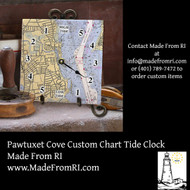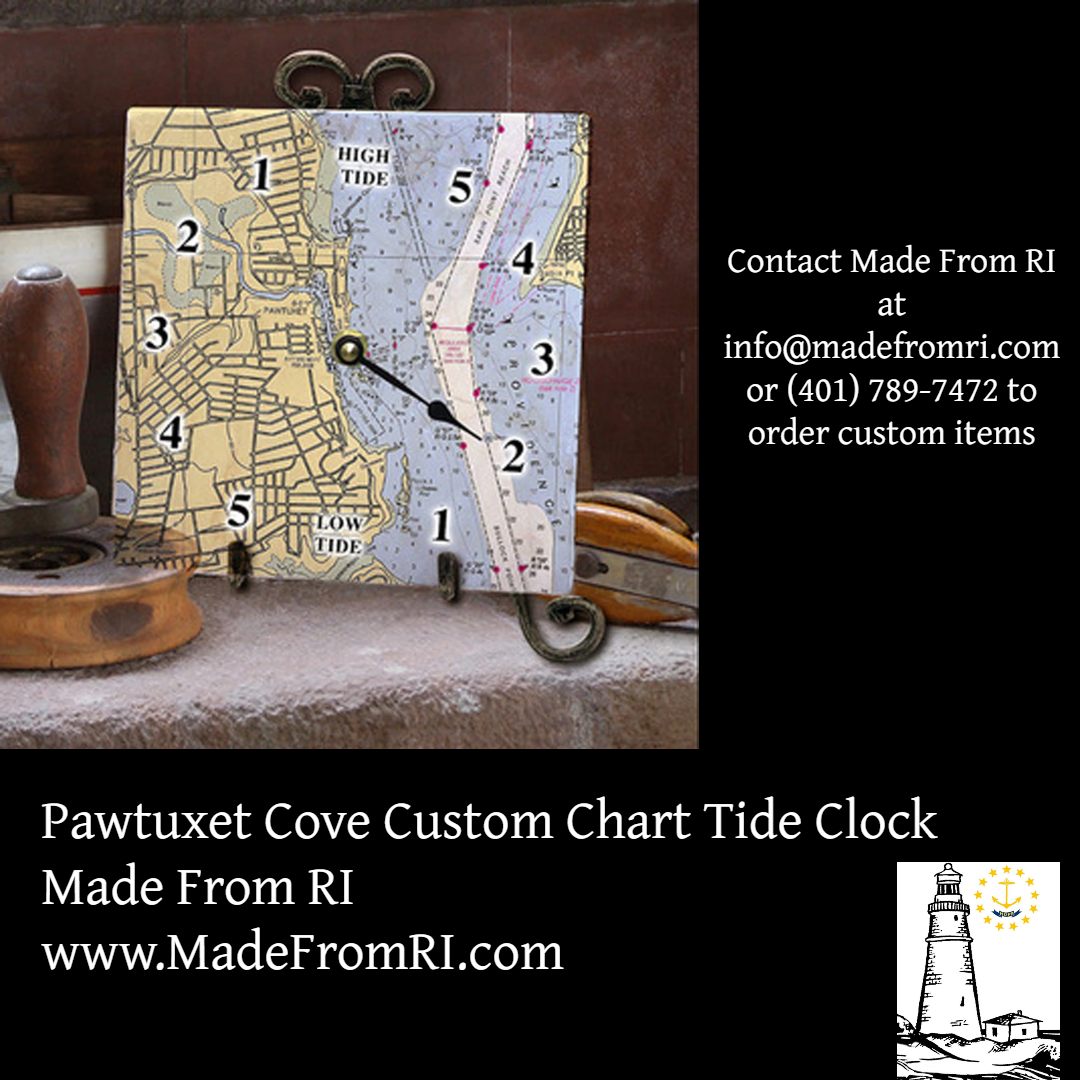How To Set Your Tide Clock From Made From RI
Posted by Keith R Wahl, Made From RI on May 3rd 2021
Setting A Tide Clock From Made From RI (and an explanation of tides)
Before you place the battery into the back of your clock, do one thing. Check the tide in your area. Our Preferred resource if the National Oceanic and Atmospheric Administration. You may find their Tide Prediction Site here: Tide Predictions - NOAA Tides & Currents. Once found, synch the tide clock hand to the current high tide (see the photo below).
Tide clocks have only one hand, and a cycle of about 12 hours and 25 minutes. This is the cycle of rise and fall of the ocean’s tide. There is an average of about 6 hours and 12 minutes between high and low tides. High tide is when the clock’s hand is at the traditional 12 o’clock position. Low tide is the 6 o’clock position. These points don’t represent the hour at all, but rather serve as convenient reference points on the dial. Hour markings between the high and low tide represent the hours that have passed since the last high or low tide, plus the hours before the next high or low tide. Tide clocks need resetting about every 4 months, depending your geographic location.
Find Tide Clocks at Made From RI here: Nature - Tide Clocks - Made From RI
How to order a Custom Tide Clock of your selected area at Made From RI: Ordering Custom Chart Tile Items From Made From RI: A Worksheet - Made From RI
Considerations of what to use a Tide Clock for if you live on the shore: Made From RI Gallery | The Skills Used In Photographing The Shore by Keith R Wahl, Made From RI Gallery


